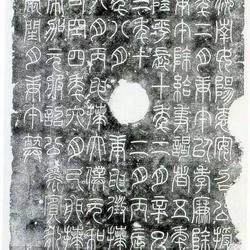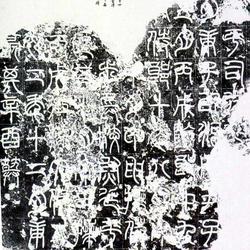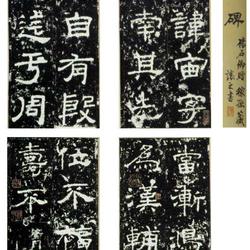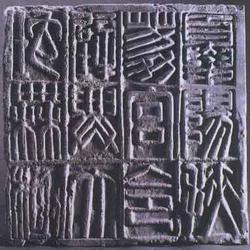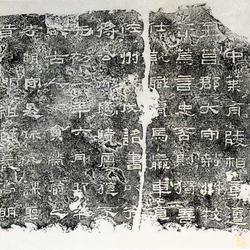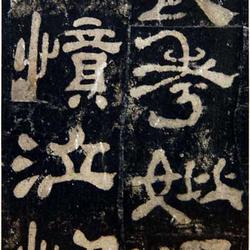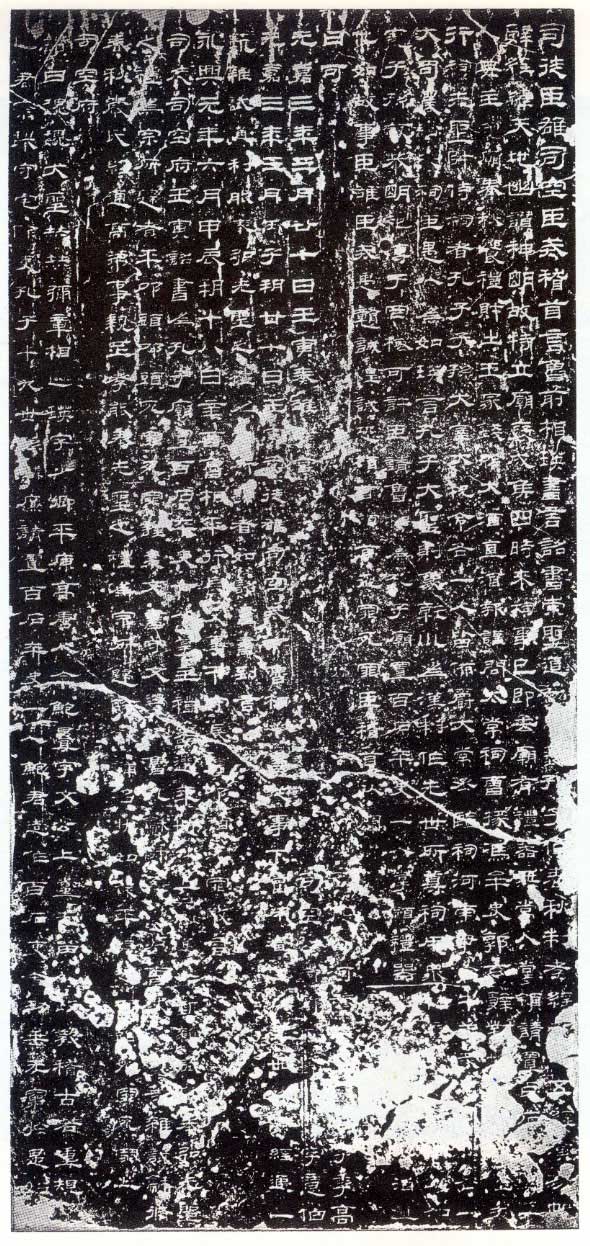
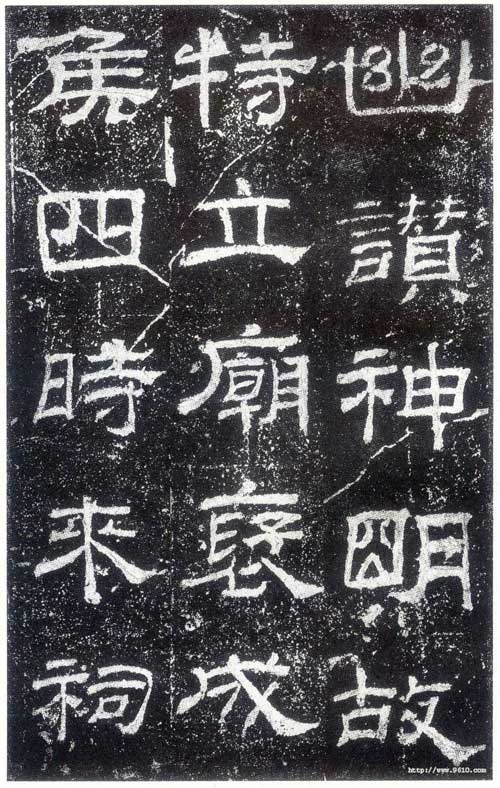
The full name is "The Monument of the History of the Death of Han and Lu Xiang Yiying" or "The Monument of Kong He". Engraved in the first year of Yongxing (15th year) of Emperor Huan. The existing Confucius Temple in Qufu, Shandong Province. The monument is 3.6 meters high and 1.29 meters wide. There are 18 lines of official script, 40 characters per line, no quota. Later, there were two lines of inscriptions by Zhang Yagui from the Song Dynasty. The content of the inscription is that Lu Xiang Yiying wrote to the Han court on behalf of the descendants of Confucius, requesting the appointment of a low-level official who would master the ritual utensils of the Confucius Temple, with the rank of "Hundred Days of Death", and proposed the conditions for this official's appointment.
"Fen Li Oocun" said that "the characters are particularly majestic, like a crown and jade, which is awe-inspiring. Zheng Yan, a recent man, is happy to see it." The inscription is in the Qin Dynasty style, with a high and classical style, and the characters are also strong and charming, which is A famous monument of the Han Dynasty. Although from the perspective of artistic creation requirements, works such as "Yi Ying Stele" appear too neat and formal, it is more appropriate and convenient for beginners to start from here to master the structure and pen-using skills of official script. Therefore, people generally believe that "Yi Ying Stele" "Yi Ying Monument" is "the one who can learn the most from Han Li".
[Exchange items]
Zhao Kan of the Ming Dynasty: The narrative is simple and ancient, and the legal system is powerful. It makes people want to see the style of the Han people, and there is no need to follow Yuan Chang. ("Graphite Engraving")
Fang Shuo of the Qing Dynasty: "Yi Ying" was established in the first year of Yongxing. It is the first among the three steles. The square and deep characters are enough to describe the beauty of the ancestral temple and the wealth of hundreds of officials. Wang Zhulin, Taishi, said that he was ancient, and Weng Tanxige said that his flesh and blood were well-proportioned, his emotions and prose were fluent, and he was the most worthy of learning from the Han Dynasty. ("Pillow Sutra and Epigraph")
Liang Qian, Qing Dynasty: It is appropriate to start from "Yi Ying Stele" when studying official script. There are many "Zhang Qian" in recent times, which is also appropriate. ("Pingshu Tie")
Qing Dynasty Bao Shichen: A branch of the Western Jin Dynasty. "Tai Gong Wang Bei" is the successor of "Yi Ying". ("Art Boat Shuangji")
He Shaoji of the Qing Dynasty: Pu Xiang came out with great success and opened up a new branch of Junli, but he had a solemn and solemn air. ("Dongzhou Caotang Jinshi Postscript")
Kang Youwei of the Qing Dynasty: After the founding of the People's Republic of China, it became Bo Teng, and seal script and official script were separated. Therefore, the steles such as "Heng Fang" and "Yi Ying" were extremely flat, and the waves were separated from the back, so the official body was completed. ("Guangyi Zhou Shuangji")
Kang Youwei of the Qing Dynasty: As for Li Fa, the physical energy is more beneficial; for Xuhe, there are "Yi Ying" and "Shi Chen". ("Guangyi Zhou Shuangji")

